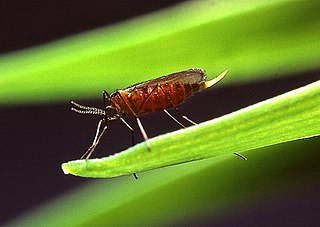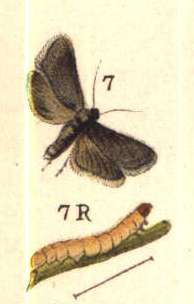Dinosaurus is an extinct genus of therapsid of controversial affinities. Its type and only species is Dinosaurus murchisonii. It is only known from a partial snout from the Permian of Russia. Its taxonomic history is intertwined with several other poorly-known Russian therapsids, particularly Rhopalodon, Brithopus, and Phthinosuchus.

Josef Breuer was a distinguished physician who made key discoveries in neurophysiology, and whose work in the 1880s with his patient Bertha Pappenheim, known as Anna O., developed the talking cure and laid the foundation to psychoanalysis as developed by his protégé Sigmund Freud.

Pyraustinae is a large subfamily of the lepidopteran family Crambidae, the crambid snout moths. It currently includes over 1,400 species; most of them tropical but some found in temperate regions including both North America and Europe.

Agrotis is a genus of moths of the family Noctuidae. The genus was erected by Ferdinand Ochsenheimer in 1816. A number of the species of this genus are extinct.

Rhynchosciara americana is a species of fly. It has a life cycle of approximately 70 days, and the sibling larvae show a synchronized development. The larvae can reach one inch in length, and the adult fly is about 0.8 inch (20 mm). The larvae groups are usually originated from the same female posture and spin a communal cocoon where the metamorphosis will occur. The fly is scientifically notable for the physiology of its polytene chromosomes and developmentally regulated amplified puffs, first observed by Crodowaldo Pavan.

The Cecidomyiinae are a subfamily of flies often called gall midges or gall gnats. This subfamily is best known for its members that induce galls on plants, but there are also many species that are fungivorous, parasitoids, or predacious as maggots.

Mayetiola are a genus of flies from the family Cecidomyiidae. Most species are pests of cereal crops.

Udea is a genus of snout moths in the subfamily Spilomelinae of the family Crambidae. The genus was erected by Achille Guenée in 1845. The currently known 214 species are present on all continents except Antarctica. About 41 species are native to Hawaii.

Drasteria is a genus of moths in the family Erebidae.

Macrobathra is a genus of moths in the family Cosmopterigidae. Most species are endemic to Australia.

Monopis is a genus of the fungus moth family, Tineidae. Therein, it belongs to the nominate subfamily, Tineinae.

Grapholita is a large genus of tortrix moths. It belongs to subfamily Olethreutinae, and therein to the tribe Grapholitini, of which it is the type genus.

The Ditomyiidae are a small family of flies (Diptera).They are found worldwide, most species are found in the Australasian and Neotropical realms. There are only two genera in Europe Ditomyia Winnertz, 1846 and Symmerus Walker, 1848 Ditomyia is found in Central Europe Symmerus in Northern Europe Symmerus is endemic to the Palaearctic.

The Phycitini are a tribe of moths of the family Pyralidae.

Contarinia is a genus of midges, small flies in the family Cecidomyiidae.
Schismatodiplosis is genus of flies in the family of gall midges Cecidomyiidae.

Rabdophaga is genus of flies in the family of gall midges Cecidomyiidae. There are 105 species distributed through Africa, Asia, Europe and North America. Most species of Rabdophaga gall willows ; one exception is R. giraudiana which galls the stems of poplars.
Odontosciara is a genus of dark-winged fungus gnats in the family Sciaridae. There are at least 30 described species in Odontosciara.

Harmandiola is a genus of flies belonging to the family Cecidomyiidae. The 14 described species are found in the Holarctic region. They induces galls on Populus, Castanea, and Carya.















